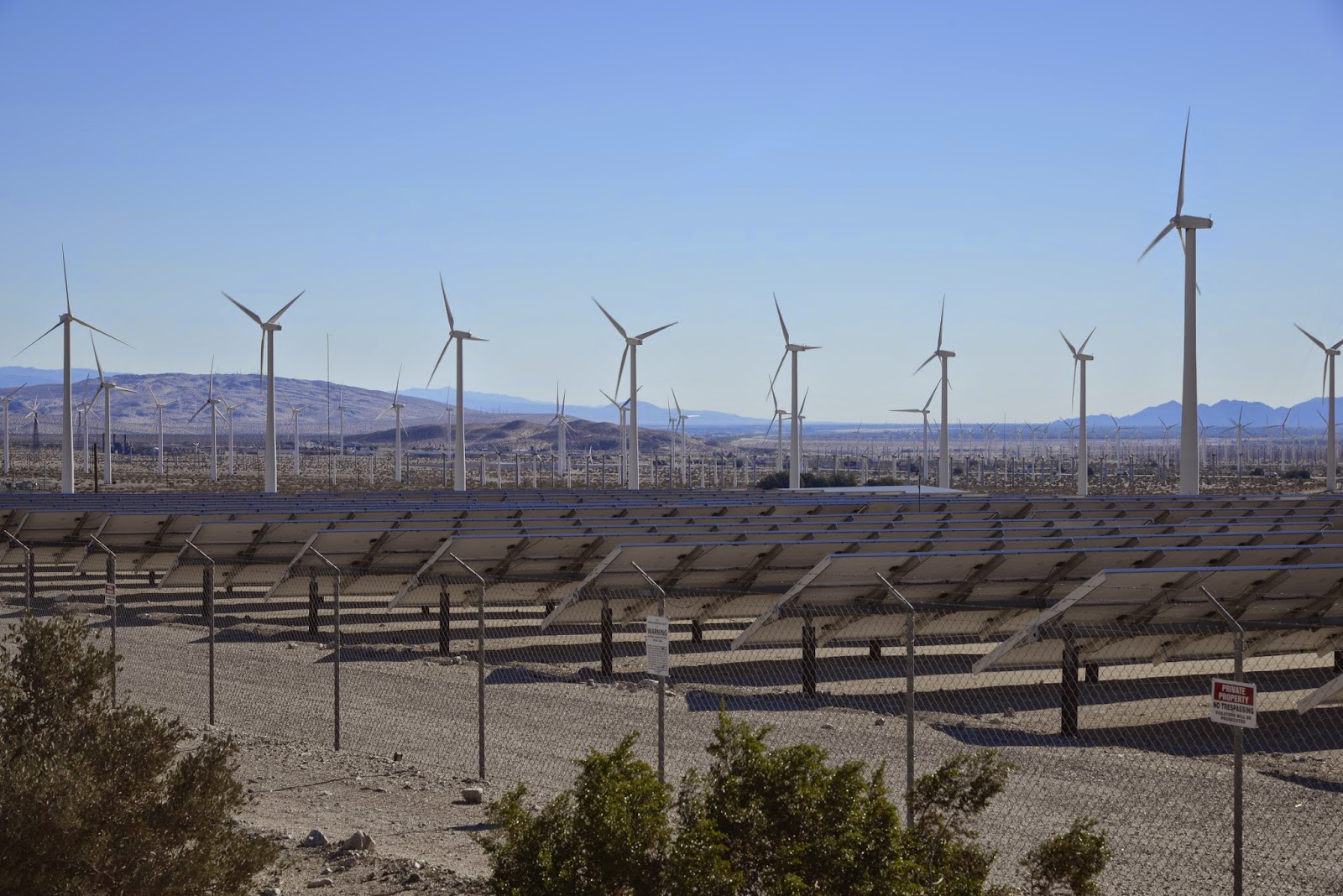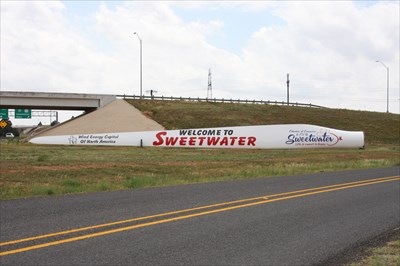We wanted to build some slack into our Christmas trek to Santa Barbara. Google maps estimates it takes 22 hours of driving without traffic. We have done the trip in two long days, but that almost guarantees heavy traffic in the dark at the end of the trip this time of year. Since we so rarely get to see the ocean, it is awfully nice for the trip along the coast to be in the light, not to mention it has got to be safer. We decided to plan for 3 days, but adjust accordingly depending upon weather or other problems. We therefore began to look for possible things to do near Los Angeles in case the trip went quickly. We had never stopped in the Palm Springs area, but thought that might be a good target for a stay on the second night...certainly doable with the additional hours going west due to time zone changes, but not written in stone in case we had weather delays or other problems.
If we did make it to the Palm Springs area for the second night, was there something of interest to do to avoid driving through Los Angeles too early the next day? What about a tour of the wind mill farm in San Gorgino Pass along I-10? I did not know if such a tour even existed, but quickly discovered two such tours online. One seemed to be the same company that provides many celebrity home tours throughout the Palm Springs area. However the other, Palm Springs Wind Mill Tours, was devoted exclusively to wind mill tours and claimed to be the only one to go behind the fence onto the wind farm property. I was also pleased to see that we could easily check for and reserve available spots for their tours online, a big plus while on the road.
Once we arrived in Palm Desert on Monday night, we made our reservations online and were ready for Tuesday morning. First we needed dinner. Based on our brief look online, we thought we would need to get in the car and drive, never a welcome option after being in the car all day. Fortunately the front desk told us about Roc's Firehouse Grille across the street. What fun that turned out to be. One of the local radio stations, 93.7 KCLB, was hosting their onsite event for Monday night football. That included free raffles and lots of craziness. (Who wouldn't lust after an Oakland Raiders sippy cup?!) We especially liked the shirts worn by the waitresses. On the back was "Stay back 200 feet". We did not stay long, but it was definitely fun.
On Tuesday morning we drove the additional 15 miles or so and easily found the site on the I-10 service drive for Palm Springs Wind Mill Tours. We were plenty early for the 9 am tour, but enjoyed looking at the many pictures in their waiting area. Who knew that the wind turbines here dated back to the early 1980's?! This wind farm in San Gorgino Pass is not the largest wind farm in California. That is the Alta Wind Energy Center a bit further north in Tehachapi Pass, apparently the largest wind farm in the U.S. (Although the farm in Tehachapi Pass is the largest, Texas appears to still be first in total generation by state.)
We also spent some time talking to the two tour guides. Unbeknownst to us, they had only been in business for about two months and were definitely doing everything they could to please their customers. There was only one other couple on this tour, two people from Michigan, so the four of us had ample opportunity to ask lots of questions.
The guides provided a description of the pictures, which was an historical overview of development of wind turbine design and wind generation. Based on the multiple pictures of catastrophic failures, this was not always a straight-forward process. I had not realized that not only did the entire turbine rotate to align with the wind, but each blade also rotates about its axis. The turbines are only allowed to operate if the wind is strong enough to generate electricity but not too strong to damage itself. That explains some of the non-rotating turbines we have observed. They also explained how some designs point in what appears to be the "backwards" direction, i.e. an older design (a few still operational in the valley) had the generator box in front of the blades. Current designs seem to be blades first, the so-called "upwind" design, to avoid the problems of wind turbulence on the blades from going around the generator box.
The turbines were definitely turning today. The wind was blowing hard and, apparently unusual for wind in the morning, was coming from the east. Wind here normally blows from the west in the morning and the east in the afternoons. It was also unusual to have this much wind in December. San Gorgino Pass has lots of steady wind, but its peak wind season is February to September. That makes it unusual for wind farms in that its peak generation season is during the summer when electrical demand is usually at its highest.
 |
| Different kinds, different sizes and possibly even different wind mill farms |
 |
| Closely spaced running north and south, but spaced out east and west so that they do not feel turbulence created from the upwind turbines |
 |
| Southern California--beautiful snow-capped mountains even in this dusty, dry desert |
We proceeded outside for several hands on displays, then climbed onto the bus for a trip by multiple types of turbines. We also stopped at a solar facility owned by an Asian company.
 |
| Solar panels facing away from us at the North Palm Springs 1 solar site, 61125 Dillon Road, plus LOTS of wind turbines. |
 |
| Using the bus as a stepladder to shoot over the fence |
 |
| Looking south across the west end of the solar project to a line of turbines on the south side of I-10. I like the "spikey" image of the aligned turbines in the distance. |
We also pulled up to the new 800 Megawatt CPV Sentinel Energy Project natural gas peaking plant, which just went operational in May, 2013. It will generate electrical power from natural gas, but only when needed. The plant has eight quick-start natural gas-powered turbines that can start up in 10 minutes to support the Southern California electricity grid and should prevent brown-outs and black-outs experienced in the past. We did not get pictures of the peaking plant, but do have pictures of an older peaking plant behind the largest of the current wind turbines.
 |
| Older peaking plant and shorter turbines in the background. New 3 Megawatt turbine in the foreground. |
These are the largest land based wind turbines currently in use. Although the weight of the blades is somewhat of an issue, the real limiting factor in size is the length and size of the blades. Anything larger apparently cannot be transported on U.S. highways. Larger turbines are in use offshore since the components can be delivered via ship.
I've only barely scratched the surface with the information they provided us. The bottom line was that we really enjoyed the tour. My only minor regret was the inability to get close to one of the larger blades such as those along the highway in Sweetwater, TX.
 |
| Not sure how these blades in Sweetwater, Texas compare to those in Palm Springs. This one blade weighs 16,000 pounds. |




Nice travelogue, but ... a typo: the name of the pass is San Gorgonio.
ReplyDelete